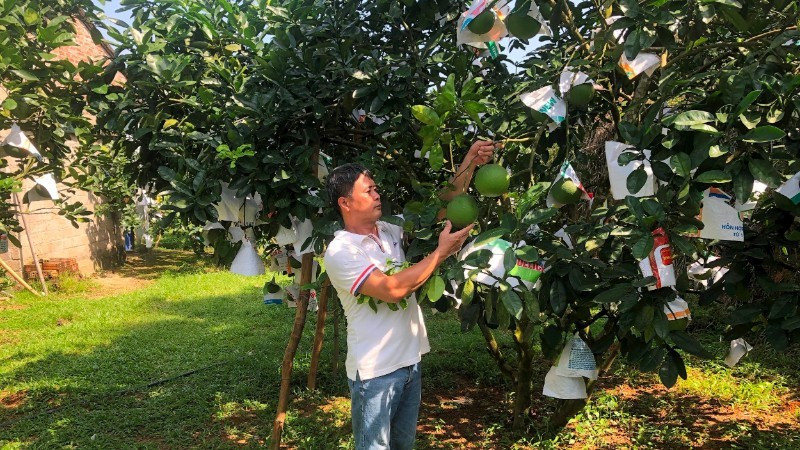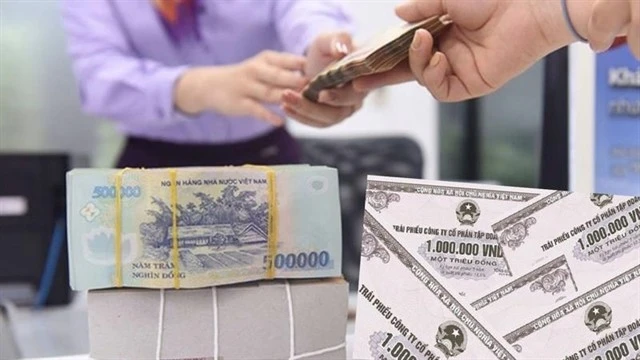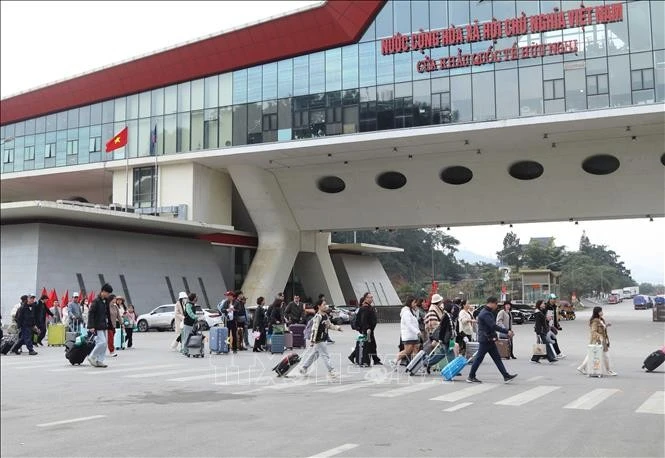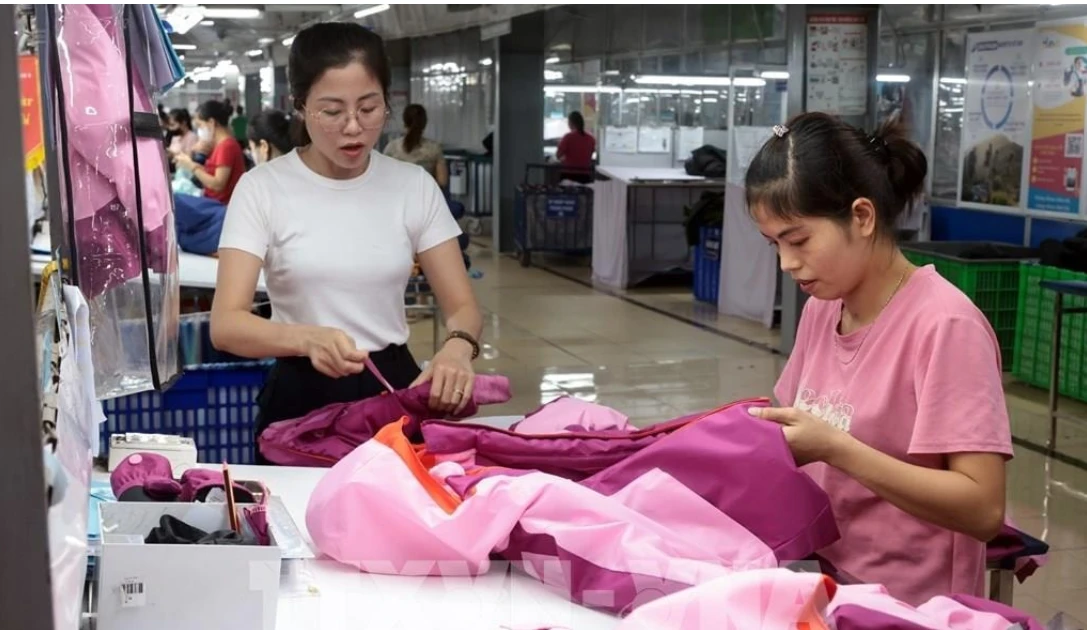Currently, the midland and northern mountainous region has about 275,000 hectares of fruit trees, many of which have established brands domestically and internationally, including lychee, mango, pomelo, banana, and plum.
Planning raw material areas
Based on production zoning and market demand, many localities have restored and developed high-value fruit trees for domestic consumption and export. According to Bui Duy Linh, Deputy Director of the Department of Agriculture and Environment of Phu Tho Province, with about 36,000 hectares of fruit trees, farmers have for many years applied technical advances to production, improving quality and product appearance.
Cooperatives, cooperative groups, and farms have been established to ensure production linkage and secure output for farmers. In addition, some products have been granted intellectual property protection and have established brands in the market, such as Doan Hung pomelo, Tan Lac red pomelo, Cao Phong orange, and Ban Nguyen green Cavendish banana.
The whole province has formed many concentrated fruit-growing areas to serve domestic consumption and export; among them are 65 pomelo export planting codes covering 664ha; 13 banana planting codes covering 357.7ha; and three facilities granted packing house codes for export to China and the European Union (EU); and dragon-fruit planting codes covering 147.4ha. Thanks to strong exports, growers’ incomes have increased significantly, with many households earning from 150–200 million VND a year, and some households earning more than 500 million VND a year.
Recognising the large banana demand in the Chinese market, in recent years, the Phu Tho Branch of Bien Xanh Trading-Service Limited Liability Company has developed raw material areas for export. Branch Director Ha Van Tu shared: “To ensure export standards, seedlings all meet quality requirements, cultivation follows VietGAP standards, planting codes are obtained, and pesticide residues are controlled during production, preliminary processing, and packaging. Products after harvest are labelled with traceability codes. Bananas from the company, cooperatives, and farmers after participating in the linkage chain all achieve good yields and quality, so selling prices are 10–20% higher than the market.”
Ensuring export standards
Similarly, over the past 10 years, Son La Province has introduced many fruit development policies to encourage and promote production. According to Ngan Thi Minh Thanh, Deputy Director of the Provincial Agricultural Technical Centre, the province’s fruit area is now about 85,050ha, with estimated output in 2025 reaching 510,000 tonnes. The locality has attracted many enterprises to invest in fruit and vegetable processing plants, supporting consumption and enabling farmers to feel secure in production. The whole province is maintaining 202 fruit export planting codes covering 2,963ha.
Notably, in the 2017–2024 period, the province focused on exporting fresh fruit and processed products with a volume of 158,395 tonnes. Its export markets include China, the Republic of Korea (RoK), Japan, the EU, the US, Taiwan (China), and the United Arab Emirates (UAE).
A representative of Muong Bu Agricultural Cooperative (Son La) said that the cooperative is cultivating 58ha of fruit trees with production processes meeting VietGAP standards, with some areas granted planting codes. At present, it supplies more than 500 tonnes of products to the market every year with revenue of billions of VND. Among them, mangoes are mainly consumed in supermarkets and safe agricultural product stores, while part is purchased by enterprises for export to China, the RoK, and the EU.
Le Quoc Thanh, Director of the National Agricultural Extension Centre, stated that fruit production in this region has great potential and advantages as localities have been and are building large, concentrated raw material areas. However, many countries now impose strict technical barriers on imported agricultural products. Therefore, achieving standards is a mandatory condition for fruit products to penetrate international markets; meanwhile, production is facing many challenges due to small-scale farming, lack of value chain linkage, and high logistics costs.
To develop fruit production in the midland and northern mountainous areas, the Crop Production and Plant Protection Department requires that in the coming period, ministries, sectors, and localities restructure crop varieties appropriately towards high quality and good yields; and complete databases on codes for planting areas and packing houses.
At the same time, the department urged stakeholders to continue to build and promote the Viet Nam fruit brand in international markets; develop e-commerce distribution channels, promote official exports; strengthen communication on risks of heavy-metal residues in production processes; disseminate and publicise importers’ requirements for agricultural products to farmers and export enterprises; and properly implement market requirements on food safety and traceability.
















